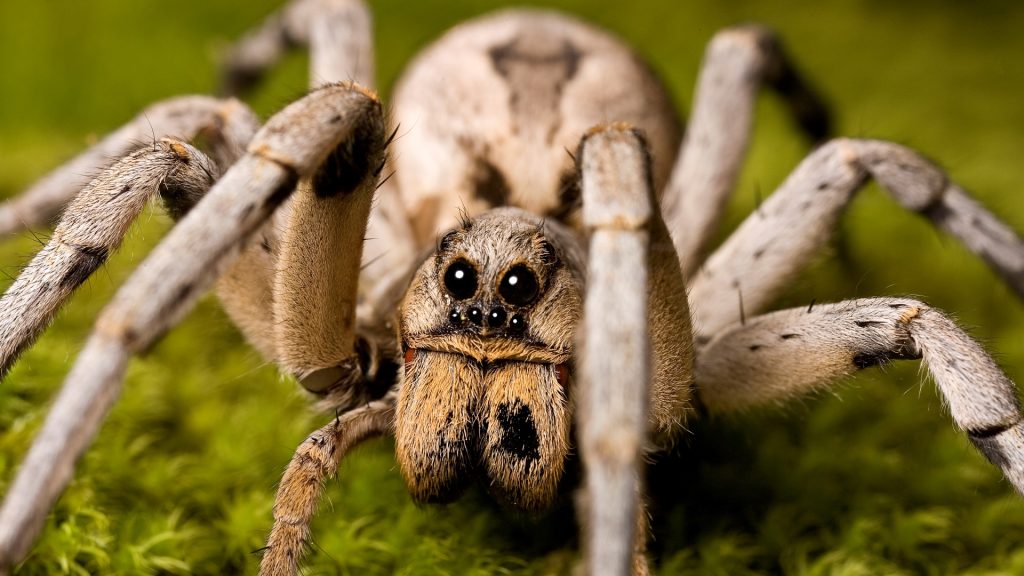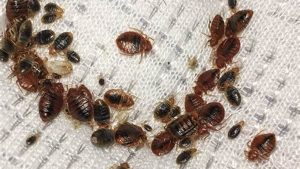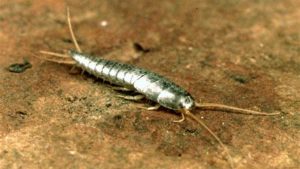When it comes to the creepy crawlies in our homes, spiders often top the list of unwanted guests. But not all eight-legged creatures are created equal. Let’s dive into the intriguing world of wolf spiders and brown recluses, and explore whether these arachnids are friends, foes, or somewhere in between.
The Wolf Spider: Nature’s Nimble Hunter

Wolf spiders are the sprinters of the spider world, known for their impressive speed and agility. Unlike their web-spinning cousins, these furry predators prefer to chase down their prey, much like their canine namesakes.
A Face Only a Mother Could Love
With their large, dark eyes arranged in three rows, wolf spiders have a distinctive appearance that sets them apart from other arachnids. Their bodies are typically brown or gray, often adorned with stripes or speckles that help them blend into their surroundings. These spiders can grow quite large, with some species reaching up to 2 inches in length.Despite their intimidating size, wolf spiders are generally shy creatures. They’d much rather scurry away than pick a fight with a human. However, if cornered or threatened, they may stand their ground and even bite – though such occurrences are rare.
Home Sweet Home
Wolf spiders are adaptable creatures, found in a variety of habitats across the United States. From deserts to rainforests, and even suburban lawns, these spiders have made themselves at home in diverse environments.Interestingly, wolf spiders don’t spin webs to catch their prey. Instead, they prefer to live on the ground, often creating burrows or hiding under rocks and logs. This ground-dwelling habit has earned them the nicknames “ground spider” and “hunting spider”.
The Brown Recluse: A Shy but Potentially Dangerous Neighbor
On the other side of the arachnid spectrum, we have the brown recluse spider. As its name suggests, this spider prefers to keep a low profile, often hiding in dark, secluded areas of our homes.
A Violin-Shaped Warning
Brown recluse spiders are smaller than their wolf spider counterparts, typically measuring between 1/4 to 1/2 inch in length. They’re easily identifiable by the violin-shaped marking on their cephalothorax, which has earned them the nickname “fiddleback” spider.These spiders have gained notoriety due to their potentially dangerous bite. While most brown recluse bites heal without complications, in some cases, they can cause necrotic lesions that may take months to heal.
A Reclusive Lifestyle
True to their name, brown recluse spiders prefer quiet, undisturbed areas. In homes, they often seek refuge in attics, basements, and rarely-used closets. Unlike wolf spiders, brown recluses are more likely to be found indoors, especially in the south-central and Midwestern United States.
The Showdown: Wolf Spider vs. Brown Recluse
Now, to the burning question: do wolf spiders eat brown recluse spiders? The answer isn’t as straightforward as you might think.
A Matter of Opportunity
Wolf spiders are indeed predators, and they’re not particularly picky eaters. Their diet typically consists of insects and other small arthropods, including other spiders. However, they don’t specifically target brown recluse spiders as a preferred meal.That being said, if a wolf spider encounters a brown recluse, especially a smaller or younger one, it may very well make a meal of it. Wolf spiders are opportunistic hunters, after all. But this scenario is more likely to occur when food is scarce, rather than being a regular part of their diet.
A Balancing Act
It’s worth noting that both wolf spiders and brown recluses play important roles in controlling insect populations. While we might not want them in our homes, these arachnids help keep other pest populations in check.In fact, some people even consider wolf spiders beneficial houseguests (though uninvited ones) due to their appetite for other insects and spiders. They’ve been known to prey on pests like ants, crickets, and even cockroaches.
Living with Eight-Legged Neighbors
While the idea of spiders in our homes might make our skin crawl, it’s important to remember that both wolf spiders and brown recluses generally prefer to avoid human contact. They’re not out to get us – they’re just trying to survive like any other creature.
Peaceful Coexistence
If you do encounter either of these spiders in your home, there’s usually no need to panic. Wolf spiders, despite their intimidating appearance, are not aggressive and will typically flee if given the chance. Brown recluses, true to their name, will also try to avoid confrontation.However, if you’re concerned about spider populations in your home, there are humane ways to discourage them. Keeping your home clean, sealing entry points, and removing clutter can all help make your space less appealing to these eight-legged visitors.
In the end, while wolf spiders may occasionally snack on a brown recluse, they’re not nature’s designated brown recluse exterminators. Both species have their place in the ecosystem, even if that place isn’t necessarily in our homes. So the next time you spot a spider, take a moment to appreciate these fascinating creatures from a safe distance – and maybe consider investing in a good catch-and-release spider catcher!
Key Fact
Key Facts and figures about wolf spiders and brown recluse spiders
| Characteristic | Wolf Spider | Brown Recluse Spider |
|---|---|---|
| Scientific Name | Lycosidae family | Loxosceles reclusa |
| Size | 0.24 to 2 inches | 0.25 to 0.5 inches |
| Habitat | Deserts, rainforests, grasslands, suburban lawns | Undisturbed dark areas in homes, attics, basements |
| Diet | Insects such as crickets, grasshoppers, flies, ants | Live and dead insects |
| Venom | Non-dangerous to humans, rarely bites unless threatened | Dangerous venom, can cause necrotic lesions if bitten |
| Hunting Behavior | Active hunters, chase prey down | Shy, prefers to stay hidden, infrequent hunting |
| Lifespan | 1 year, rarely up to 18 months | 1 to 2 years |
| Common Location | Widespread across the US | South and Central USA |
| Web Spinning | Do not spin webs for catching prey | Build irregular flat webs as retreats |
| Eye Arrangement | 8 eyes in 3 rows | 6 eyes arranged in 3 pairs |
| Distinctive Marking | No specific marking | Violin-shaped marking on cephalothorax |
| Reclusive Nature | No | Yes |
| Reproduction | Carry egg sacs on spinnerets | Lay eggs in silk sacs |
| Speed | Can run up to 2 feet per second | Not known for speed |
Frequently Asked Questions: Wolf Spiders vs. Brown Recluse Spiders
Q1: How can I identify a wolf spider?
A: Wolf spiders are typically brown, gray, or tan with dark markings. They have eight eyes arranged in three rows, with two large eyes in the middle row. Their body length ranges from 0.24 to 2 inches, not including legs.
Q2: How can I identify a brown recluse spider?
A: Brown recluse spiders have a distinctive violin-shaped marking on their back. They have six eyes arranged in three pairs, unlike most spiders which have eight eyes. Their body is usually 1/4 to 1/2 inch long.
Q3: Do wolf spiders spin webs?
A: No, wolf spiders don’t spin webs to catch prey. They are active hunters that chase down their food.
Q4: Are wolf spider bites dangerous?
A: While wolf spiders can bite, their venom isn’t dangerous to humans. Bites may cause mild redness and itching.
Q5: Are brown recluse spider bites dangerous?
A: Brown recluse bites can be serious. They may cause painful lesions and, in rare cases, more severe symptoms. However, no verified fatalities from brown recluse bites have been reported.
Q6: Where are these spiders commonly found?
A: Wolf spiders are found worldwide in various habitats, including homes. Brown recluse spiders are primarily found in the South and Central United States, often in dark, secluded areas of homes.
Q7: How long do these spiders live?
A: Wolf spiders typically live for about a year, rarely up to 18 months. Brown recluse spiders can live 2-4 years in the wild, and up to 7 years in captivity.
Q8: Do these spiders pose a threat to humans?
A: Both species generally avoid human contact. Wolf spiders are not considered dangerous. Brown recluse spiders can be harmful if they bite, but this is rare and usually occurs when the spider feels threatened.
Q9: How can I prevent these spiders from entering my home?
A: Reduce clutter, seal entry points, and keep your home clean. Check items before bringing them inside, especially if you live in an area where brown recluse spiders are common.
Q10: What should I do if I suspect a brown recluse bite?
A: If you suspect a brown recluse bite, seek medical attention immediately. While most bites heal without complications, some can lead to more serious symptoms



